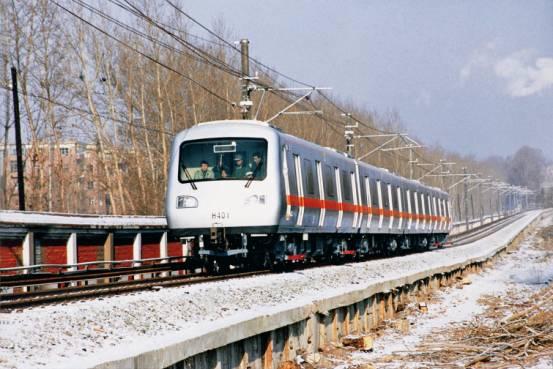
Beijing"s subway system carry 1.35 million Beijingers every day.
Regardless the rise of the private motor car, the subway represents the most efficient way of getting from A to B for most Beijingers.
With the capital"s traffic bottlenecks now the stuff of legend, the majority of streetwise residents still favour the underground network.
That"s why anyone depending on public transport to get around the capital of the world"s most populous nation is keeping a close eye on ambitious city plans to dramatically increase the urban rail network.
It may be subject to overcrowding but it runs to a reliable timetable and is seldom subject to delays.
The current system, the country"s first, was started in 1965 and began to operate in 1969.
Currently there are four lines in operation. By 2008, the city"s rail network should extend to in excess of 250 km.
Line No 1 stretches west-east along Grand Chang"an Avenue and beyond.
The Batong Line runs eastward to Tongzhou District.
Line No 2 circles the Second Ring Road, and Line No 13, is Beijing"s first above-ground city metro, winding to northern outlying districts such as Haidian, Changping and Chaoyang, linking in Xizhimen and Dongzhimen.
The existing four lines span 115 kilometres and have 70 stations. The service starts as early as 5 am and runs until midnight.
To the delight of many, three new lines are now under construction with strict deadlines to meet.
The municipal government, keen to alleviate traffic jams and prepare promised infrastructure ahead of the 2008 Beijing Olympic Games, is pouring billions of yuan into the schemes.
The three new metro lines currently under construction are Line No 4, Line No 5, and Line No 10.
Line No 5, started in December 2002, is a vital north-south route. Spanning some 27.6 kilometres, it will connect Puhuangyu near the antiques markets in Panjiayuan, the Temple of Heaven, Dongdan, Yonghegong Lamasery and Ditan Park on the Second Ring Road, then wind northward to Hepingxi Overpass on the Third Ring Road, the Yuan Dynasty Capital Wall Relics Park and northward across the Fourth Ring Road.
The line passes underneath moat rivers at Yonghegong Bridge, creeps under the Third Ring Road at Hepingxi Overpass and then comes out into the open on ground level after crossing the Fourth Ring Road.
With a total investment estimated at 12 billion yuan (US$1.4 billion), Line No 5 is set for trial runs at the end of 2006, according to Beijing Subway Track Transportation Construction and Management Company Ltd.
Line No 4 zigzags from northwest at the Summer Palace and the Old Summer Palace to Tsinghua and Peking universities, China"s "Silicon Valley" at Zhongguancun, down to China National Library and on to Beijing Zoo. From there the line runs eastward to Xizhimen, Xinjiekou, then south passing Ping"anli at Pin"an Avenue, to Xidan, Taoranting Park and Yongdingmen Railway Station and beyond.
Estimated at a budget of 148 billion yuan (US$17.8 billion), the line, running to 28.14 kilometres, began construction in December last year and is scheduled to go into operation in 2008.
Line No 10 forms a semicircle along the Northern and Eastern Third Ring roads, from Suzhou Street at Beijing Foreign Studies University eastward to Panda Roundabout at the China Ethnic Park, Landmark River, down to China Agriculture Museum, China World Trade Centre and points south.
The line, started late last year, is costing 157 billion yuan (US$18.9 billion) with its first phase due to open in 2008.
Meanwhile, a so-called Olympic Branch Line connected to Line 10 starts from the Panda Roundabout and goes to the Olympic Centre, northward to the Olympic Park and the National Forest Park. It is scheduled to be complete before 2008.
"By the year 2008, the subways in the urban areas will reach a total distance of 249.5 kilometres," said Yan Zhihe, a Public Relations officer with Beijing Subway Track Transportation Construction and Management Company Ltd.
Including several new lines connecting suburban communities to urban areas, Beijing"s rail network will exceed 300 kilometres by 2008.
The original two subway lines meanwhile are to be revamped, including the provision of an Automatic Fair Collecting (AFC) system, the use of new trains and other services.
The blueprints currently being executed envisage a subway and ground-level network reaching every corner of the city.





